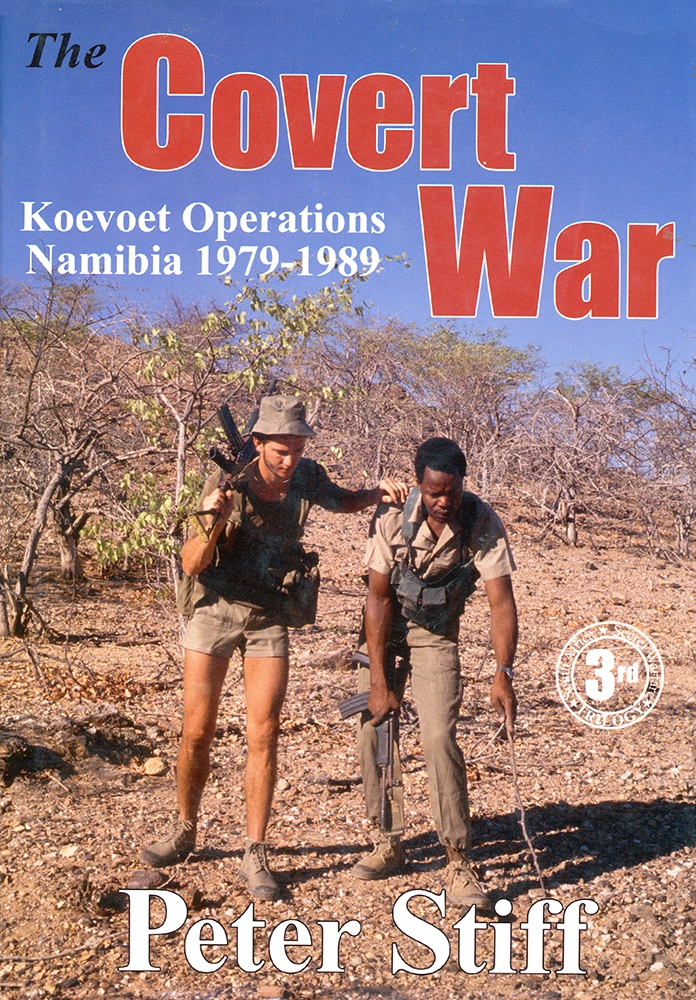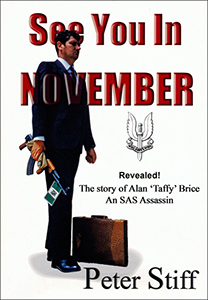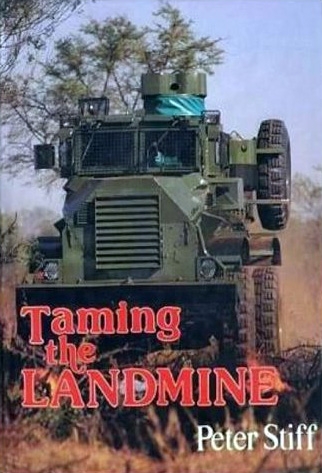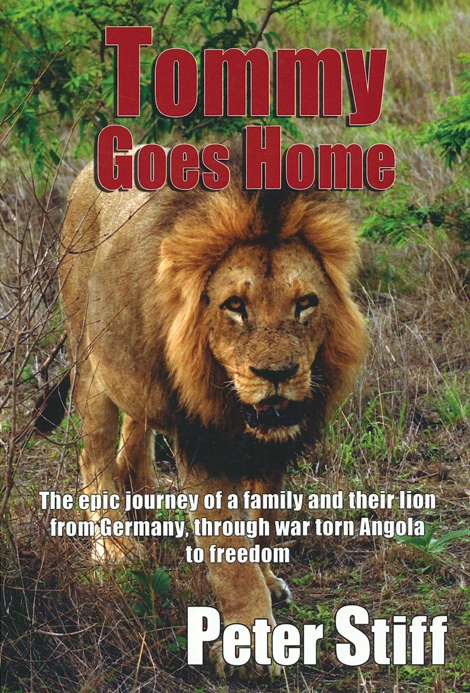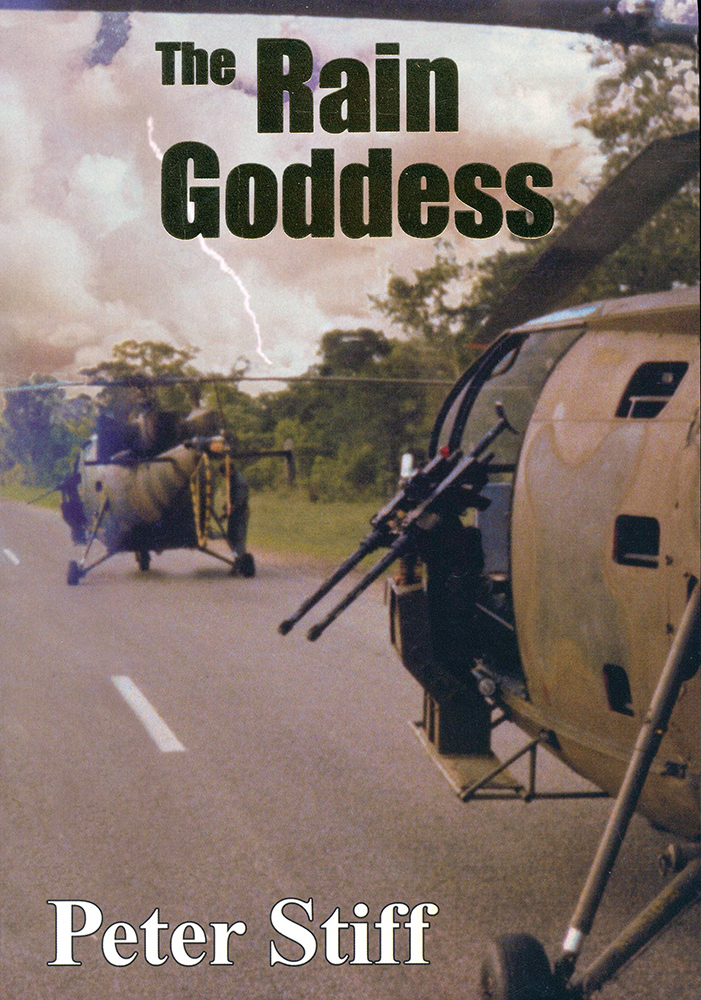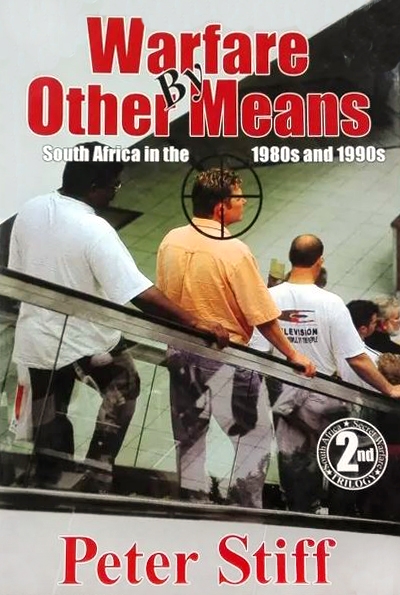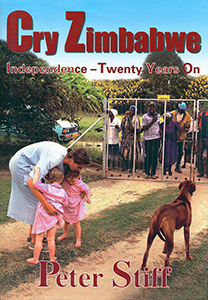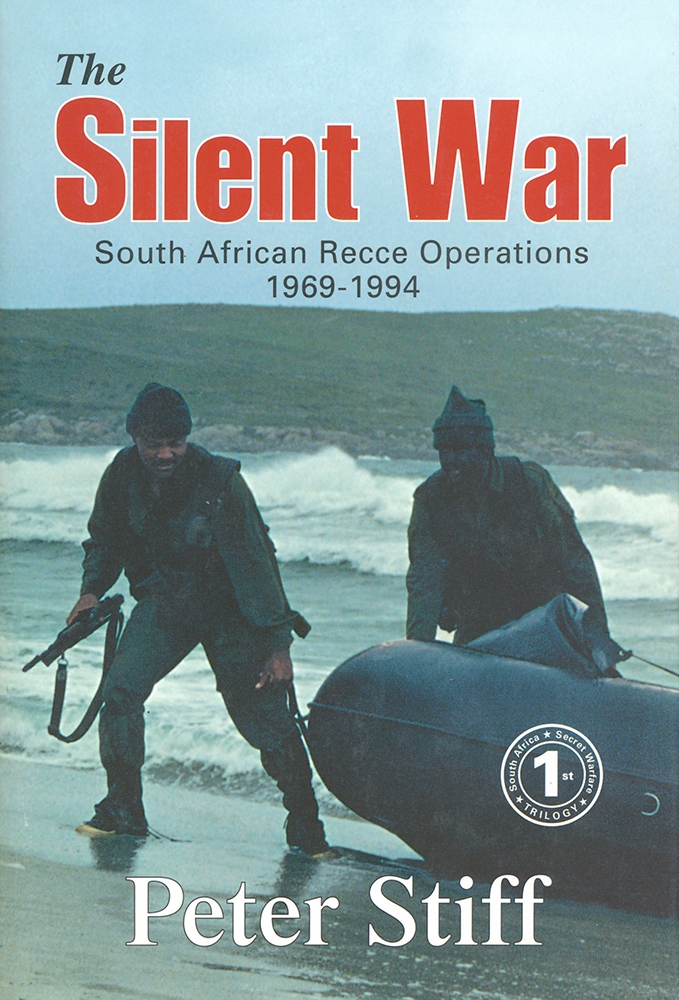The Covert War. Koevoet Operations in Namibia 1979-1989, by Peter Stiff
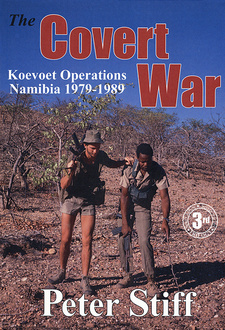
The Covert War. Koevoet Operations in Namibia 1979-1989, by Peter Stiff. Publisher: Galago, 3rd edition, Cape Town, South Africa 2004. ISBN 9781919854502 / ISBN 978-1-919854-50-2
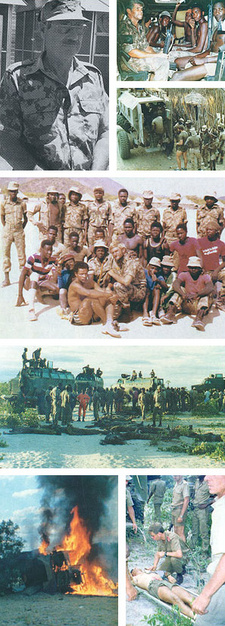
Fotos from the military history book 'The Covert War. Koevoet Operations in Namibia 1979-1989' by late Peter Stiff. 2nd edition, ISBN 1919854029 / ISBN 1-919854-02-9 / ISBN 9781919854021 / ISBN 978-1-919854-02-1
From his book 'The covert war', Peter Stiff describes the Koevoet operations in northern Namibia. The following text is taken from the chapter 'Owamboland 1982'.
Looking back to when Koevoet was first established in January 1979 their successes and the increasing combativeness of PLAN were illuminating. In 1979 they killed 64 insurgents and captured/arrested 65 in 40 contacts. Own casualties were three dead and two wounded. No landmines were detonated by the unit's vehicles. In 1980 they killed 105 and captured 27 in 88 contacts, suffering own casualties of two dead and eight wounded. Five landmines were detonated by the unit's vehicles. In 1981 they killed 434 and captured 79 in 256 contacts. Their own casualties were four dead and 64 wounded. The unit detonated 26 landmines. Constable Herman Havenga had been thirsting for action ever since he had completed his recruit's course at the Police College in Pretoria. He volunteered for Koevoet and was accepted. On his arrival in Oshakati he was posted as a car commander to Sergeant Chris de Wit's Zulu Whisky. The group only had three Casspirs. In late January 1982 the team was operating near Ongandjera. One afternoon they called at the COIN base to overnight and collect re-supplies. At 18:00 they were enjoying cold beers in the police pub. They were about to order a second round when a constable rushed in, his face as white as a sheet. He had been to Oshakati with some others by Casspir to collect supplies for the base. On the return trip they were ambushed close to Ongandjera. Foolishly, they hadn't kept their personal weapons close to hand so they couldn't even return fire. The driver accelerated and managed to weave his way through the ambush. It was lucky escape. Chris de Wit took his team to the scene. Close to the ambush site they discovered a civilian-owned bakkie that had detonated a landmine. Three unfortunate black civilians had been killed in the blast. It was apparent that the landmine had been meant for the follow-up team. The trackers found the ambush positions. It was clear the insurgents had laid in wait for several hours because they had taken the trouble to fashion makeshift shades from grass to protect them from the sun. They marked the spot and returned at first light the next morning. The trackers picked up spoor and began to follow it. The group responsible for the ambush was about 20 strong, but as the day wore on the members continually hived off until they were following only three individuals. The white policemen were driving the Casspirs and it was the first time that Herman Havenga had faced the prospect of a contact. His thoughts were a jumble of confusion. 'It was one hell of a job. I was very thin in those days and it was hard work wrestling the Casspir across the veld. The black specials were shouting abuse and stuff at me because I was not driving the way they wanted me to. I really didn't know what it was all about. The heat inside the Casspir was oppressive, particularly in the driver's seat. I started to think: This definitely isn't for me. I'm going to die.' At about 15:00 his and Constable John Tait's cars leapfrogged ahead to check for spoor. Three insurgents lay in wait behind the posts of a cattle enclosure in a kraal complex. They were lining up both Casspirs with RPG7s, but they failed to see De Wit's car approaching from the rear. He spotted them first and blasted their positions, killing all three. Constable Tekkies le Roux returned to Oshakati on 3 February 1982 after his application to join Koevoet had been approved. To his surprise he was waylaid at the airport by Warrant Officer Frans Conradie who told he wanted him in Zulu Foxtrot. He agreed. Conradie had effectively stolen a march on Lieutenant Roelf Maritz who was severely miffed because he had expected Le Roux to rejoin his Zulu Mike group. Le Roux couldn't sing Frans Conradie's praises high enough. He was the best. If he sent me into a terr base on my own I always knew that he was just at my back, looking out for me. I always knew he wouldn't let me down. He was the best commander I have ever served with and I have not come across anyone else who matches him to this day. I was with Zulu Foxtrot for two years and we didn't lose one guy dead or seriously wounded. I think that's a record. Sure we had a few minor casualties, shrapnel and things, but those hardly count. Conradie told him to get ready because Zulu Foxtrot would be deploying the following day. He wouldn't be accompanying them because he hadn't recovered from a back injury sustained in a landmine explosion. Sergeant Alf Long was the acting group leader. The third car commander was a constable on temporary attachment from the Pretoria dog squad. On 4 February they deployed into the Elundu area and the next morning they picked up the tracks of 30 to 40 insurgents. Such a large number was too much for Zulu Foxtrot to tackle alone, so Long radioed the ops room at Eenhana to request assistance. He called continuously for about ten minutes, but couldn't get through because either their radio or the set at Eenhana was unserviceable. He then despatched a car there to fetch assistance and began a follow-up with the remaining cars. At 10:00 they drove into an ambush. The commander was shooting with a Tokarev pistol. The others had AKs and RPG7s. My car's engine was hit by an anti-tank rifle grenade. I couldn't move. A terr was standing about two metres from me. I could see he was trying to remove the pin from an F1 grenade. Then he raised his arm to throw the grenade into my Casspir. At that moment Alf turned right in front of me and he saw the guy. Alf shot him just as he was about to throw the grenade. He fell on his grenade which blew his head off. We shot three terrs in that contact. The others bombshelled and escaped. We suffered no casualties. Tekkies' Casspir was knocked out and needed to be picked up by a recovery vehicles. Sergeant Long decided to also head for Eenhana and regroup there. They were ambushed again as they drove into the Eenhana base. They fought off the enemy who broke contact and disappeared into the bush. There were no casualties on either side. The operations officer at Eenhana was a captain on temporary attachment from Security Branch Pretoria. He came out to meet them, his face white and his eyes as big as saucers. He had harboured the mistaken belief that Eenhana was safe from attack. Teams were called in to help with the follow-up. They found tracks but it began raining heavily and the spoor was washed out. The SWA Administration had a small farm of two or three hectares just outside Oshakati that was standing idle. Brigadier Dreyer asked permission for Koevoet to use it for limited farming activity and as a tool for rehabilitating ex-SWAPO combatants. Head Office in Pretoria supported the venture and supplied implements, seed and fertiliser. An area was placed under cultivation and mealies and all kinds of vegetables were grown. There were also chickens and a few cows for milk; a piggery was added later. Farming activities were supervised by the assistant Intelligence Officer, Warrant Officer van der Walt. Products were sold to the local community and it took only a short time before the farm became a vibrant and self supporting operation. Proceeds were used to expand farming operations and to buy tools and medical equipment for the fighting groups. In early 1982 the Koevoet Steakhouse was established in the Okavi administration centre next to Omainwandi. Its purpose was to provide a facility where white Koevoet members could relax and enjoy decent meals at a low cost. It also contained a low-cost pub. The steakhouse was run by the wives of married members. It was an easy going and sociable place where operators could let down their hair after returning from operations. And it helped to keep them away from public bars in Oshakati where their boisterous behaviour was not always appreciated. Best of all it was subsidised by the farm's profits. At about 02:00 on 26 February SWAPO mounted a standoff bombardment of the COIN base at Ongandjera with 82mm mortars. Not a single bomb hit target and no one was injured. Police units also had mortars, but they were only 60mm versions for support and not for offensive purposes. The range was nothing like that of the opposing 82s, so returning fire was pointless. This was fortunate because if they had retaliated the flashes would have given the enemy the opportunity to correct their aim. Fortuitously two Koevoet groups, Sergeant Chris de Wit's Zulu Whisky and Warrant Officer Pete Stassen's Zulu Sierra were overnighting at Ongandjera. At first light they left to check for spoor and by 07:00 had found the tracks of a 20-strong insurgent group that was moving in an easterly direction. They mounted a follow-up and at 10:30 there was a contact in which four of the enemy were killed and a special constable slightly wounded. At 17:40 they caught up with the same group again and with the aid of Alouette gunships, another guerrilla was killed. That night they camped on the spoor and continued the follow-up the next day. At 11:00 on the following day they killed four more. In the final contact at 12:3 0 another three insurgents were killed with the aid of gunships. Amongst the dead was group leader Nambata who was attached to PLAN'S Western Front Ground Forces Detachment. The follow-up had commenced at 07:00 on 26 February and ended at 15:00 on 27 February. They had chased the enemy for a distance of 115 kilometres. Only eight of the original infiltrating group of 20 escaped with their lives (...)
This is an extract form the book:The Covert War. Koevoet Operations in Namibia 1979-1989, by Peter Stiff.
Book title: The covert war
Subtitle: Koevoet operations in Namibia 1979-1989
Author: Peter Stiff
Genre: Military history
Publisher: Galago Publishing
3rd edition. Cape Town, South Africa 2012
ISBN 9781919854502 / ISBN 978-1-919854-50-2
Softcover, 17 x 24 cm, 512 pages, numerous photos, English
Stiff, Peter im Namibiana-Buchangebot
The Covert War. Koevoet Operations in Namibia 1979-1989
The Covert War is the full and mostly untold story of the Koevoet operations in northern Namibia during 1979-1989.
See You In November. The Story of Alan ‘Taffy’ Brice: An SAS Assassin
See You In November ist the story of SAS member Alan ‘Taffy' Brice, who led a a secret assassination team in hostile Zambia during the Rhodesian Bush War years.
Taming the Landmine
Taming the Landmine is about the advances made in the design of mine protected vehicles in Rhodesia and South Africa from World War I to the 1980s.
Tommy Goes Home
Tommy Goes Home is the true story of a German family's amazing treck across Africa between hope and civil war.
The Rain Goddess
The Rain Goddess is an explosive novel based on facts and set in Rhodesia, now Zimbabwe, in the mid 1960s and early 1970s.
Warfare by Other Means: South Africa in the 1980s and 1990s
Warfare by Other Means describes the methods of warfare conducted by South Africa’s secret intelligence and covert warfare units in the 1980s and 1990s.
Cry Zimbabwe. Independence-Twenty Years On
Cry Zimbabwe is a most into topic story of the ongoing tragedy twenty years on after Zimbabwe acchieved independence.
The Silent War. South African Recce operations 1969 to 1994
The Silent War. South African Recce operations 1969 to 1994: South Africa’s special forces during the apartheid years.

